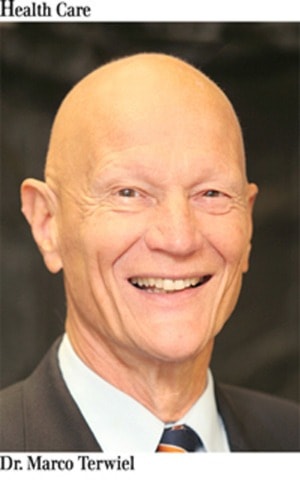Mammograms are not a favorite pastime for any woman, but most approaching middle age and beyond will avail themselves of this taxpayer-funded screening service. It saves a lot of lives. On the other hand, it can create anxiety when a woman gets a call to schedule another, more detailed mammogram and often an ultrasound, as well. Sometimes, it’s not just anxiety from the prospect of breast cancer that a woman deals with, but the frustration of dealing with government bureaucracy. A level-headed lady, we shall name Alice, in her late forties has been dealing with this type of frustration since late last year. In July, she got a call-back for a second mammogram. Being well informed, she figured that it would probably be a false alarm, like it is in the majority of call-backs. After all, the screening pictures are not diagnostic; they only may show an abnormality warranting a closer look just to be safe.They don’t do a more thorough job to begin with because you would receive a lot more unnecessary radiation in a great majority of the screened women. Alice had a second mammogram and ultrasound in July and, indeed, there was a strong suggestion of cancer. The only way to find out for sure was to do a biopsy, which was performed in August. She still wasn’t concerned until, on Sept. 1, her doctor told her that she had cancer in one breast and that she needed a mastectomy. At that time, it appeared that the cancer was still confined to the milk ducts and had not spread into the surrounding tissues (a post-mastectomy pathology report would prove otherwise). Her doctor recommended a surgeon, but not all surgeons are equal and after some Internet research and meeting a couple of surgeons, Alice found a confidence-inspiring team of a general surgeon and plastic surgeon offering the latest and least disfiguring technique, utilizing a relatively new, but proven material called AlloDerm. It is made from donor skin acting as a scaffold for the body’s own tissue to regenerate and hold the permanent implant in place securely. The greatest advantage is that the breast can be reconstructed at the same time the mastectomy is performed, and therefore saves the patient having to undergo a second and sometimes a third surgical procedure to restore the normal anatomy. Until recently, the usual reconstructive procedure was to insert a balloon like tissue expander after the mastectomy to stretch the muscle and skin, followed by frequent doctors’ appointments to have small amounts of saline solution injected into the expander through a valve. Once the inflation process is complete, a second surgery is then required to remove the expander and replace it with a permanent implant.Alice was told that the government did not yet pay for AlloDerm, but that she could start a process of applying for special authority by sending a doctor’s letter to Pharmacare. She started that application process on Sept. 27. As she could not put off her surgery, she paid $5,500 for the graft herself and the surgery was performed on Oct. 5. In the meantime, Pharmacare passed her request to the Medical Services Plan of B.C. MSP called in October to say that, as the graft was a product used during the surgery, her local health authority should pay for it. They told her the request would be sent to the Fraser Health Authority. When Alice hadn’t heard from anyone at the FHA, she started calling their New Westminster office and was passed through several accounting people. She hit a wall when the last person she was passed to told her that she would get a name of a person who could tell her if her request would be considered, but who never called back. Alice called back to be told that the woman’s manager had told her not to call. Alice has recovered from her surgery, but to this date is still dealing with the frustration of the run-around she is getting from the FHA. The Canada Health Act states clearly that patients are entitled to comprehensive care if that is medically required. Aside from the effects of the physical and psychological factors on the quality of life during the usual two-stage reconstruction process, the additional risk of an extra surgery, and the extra time spent unable to return to work, there is the bottom line of cost effectiveness. The tissue expander requires the expense of a second use of an operating room, wages for operating room staff and anesthesiologist, plus many more physician visits. Surely this would be a greater cost to the FHA than the cost of a graft. Dr. Marco Terwiel is a retired family physician who lives in Maple Ridge.
